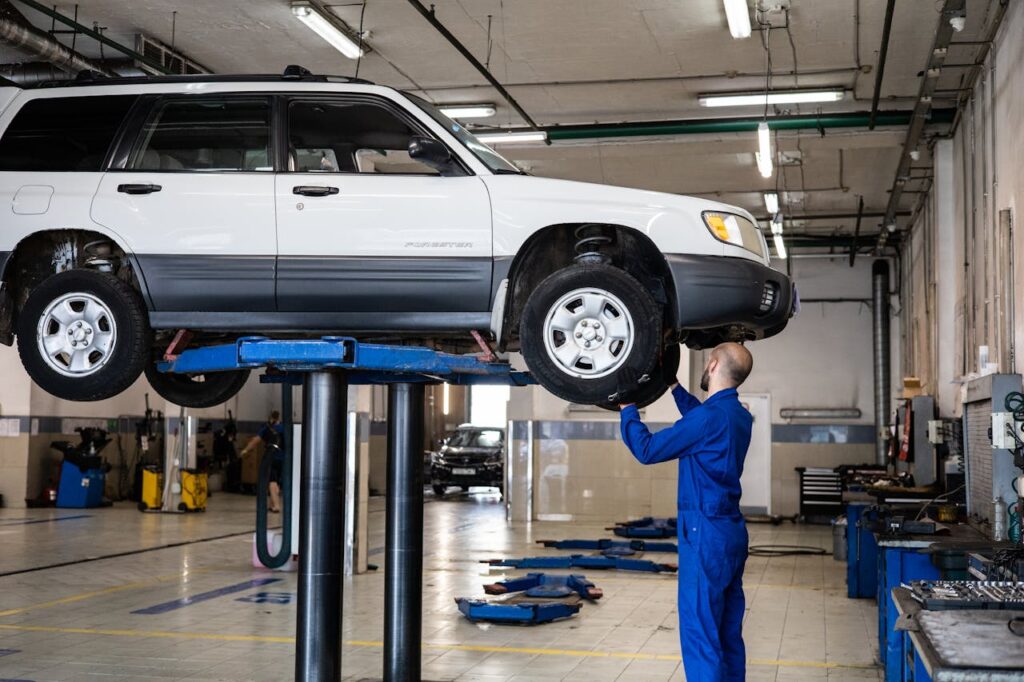Crucial Considerations for a Safe and Effective Car Hoist Installation in Your Garage
If you are thinking about installing a car hoist in your garage, it is absolutely essential to verify that your concrete floor meets all necessary specifications. A robust and stable foundation is not only vital for the efficient operation of the hoist but also critical for ensuring the safety of your vehicles and anyone using this equipment. Taking the time to prepare properly and follow installation guidelines can greatly improve both the performance and lifespan of your hoist while minimizing risks associated with improper installation.
Most car hoists require a concrete slab that is at least 100mm (4 inches) thick. This specific measurement is crucial as it allows for the even distribution of weight from both the vehicle and the hoist, which significantly reduces the risk of cracking or sinking over time. For heavy-duty hoists, it is advisable to consider a thicker concrete slab, potentially up to 150mm (6 inches), to ensure optimal functionality and safety during operation.

Comprehensive Steps to Determine the Ideal Concrete Thickness for Your Car Hoist
Determining the appropriate thickness of your concrete floor is a fundamental aspect of the safe installation and operation of a car hoist. Various factors must be considered when evaluating the suitable depth for your slab to ensure it can support the loads it will encounter during use. A thorough understanding of these factors can help you avoid costly mistakes and enhance the safety of your garage setup, ensuring peace of mind while working on your vehicles.
Evaluating Load Capacity for Your Car Hoist Installation
Car hoists place significant stress on the concrete floor beneath them, making it imperative to understand the total weight that your concrete floor is expected to support. This assessment involves considering not only the weight of the vehicle being lifted but also the weight of the hoist itself, which can add considerable load to the floor’s structure. Understanding these weights is crucial for a successful installation and operation.
A standard passenger vehicle usually weighs between 1,500 to 2,000 kg, while the hoist itself may contribute an additional 500 to 1,000 kg. Moreover, it’s wise to factor in extra weight as a safety buffer to ensure the structure can withstand unforeseen circumstances, such as additional tools or equipment used during maintenance.
For most home garages, a concrete thickness between 100 mm and 150 mm is typically sufficient. However, if you intend to lift significantly heavier vehicles, it may be beneficial to consider a thicker slab to guarantee safety and stability throughout the operation. Engaging with a structural engineer is a prudent choice, as they possess the expertise needed to provide tailored advice and help you calculate the precise thickness required based on your specific circumstances and requirements.
Analyzing Various Types of Car Hoists and Their Concrete Thickness Needs
It is essential to understand that different types of car hoists have unique requirements regarding concrete thickness. Among the most popular options for homeowners looking to incorporate a car hoist into their garage are two-post lifts and four-post lifts. Recognizing the differences in their requirements can aid in making informed decisions during your installation process.
Two-post lifts generally exert pressure at specific points, necessitating a thicker concrete slab, often around 150 mm or more, to effectively accommodate the concentrated load. This is particularly important to prevent any structural failures during use.
On the other hand, four-post lifts distribute weight more evenly over a larger area, allowing them to operate effectively with a slightly thinner slab, typically within the range of 100 mm to 125 mm. This understanding is vital for planning and ensuring the installation meets safety standards while functioning correctly.
Always consult the manufacturer’s specifications for the specific hoist you are considering, as they will usually outline the minimum concrete thickness required for safe operation. Adhering to these guidelines is crucial for achieving optimal performance and ensuring the longevity of your installation.
Keep in mind that these recommendations serve as broad guidelines. Your unique needs may vary based on your garage configuration and the types of vehicles you plan to lift.
Recognizing the Significance of Concrete Strength and Reinforcement Techniques
The strength of your concrete is just as important as its thickness. Stronger concrete can often be successfully utilized at a thinner depth while still providing adequate support for heavy loads, making this consideration particularly relevant for car hoist installations.
It is advisable to use concrete with a compressive strength of at least 25 MPa for a car hoist installation. Many industry experts recommend opting for concrete with a strength of up to 32 MPa for applications involving heavy-duty use and frequent vehicle lifting, ensuring it can adequately handle the demands placed upon it.
Incorporating reinforcement techniques into your concrete mix is essential for significantly enhancing the durability of your installation. Adding steel mesh or rebar can greatly improve the overall strength of your concrete floor, allowing for the use of a thinner slab while still providing the necessary support for heavy loads during operation.
For most home garages, using SL82 mesh presents a reliable and cost-effective option. It offers sufficient strength for the majority of car hoists without excessive expense, a vital consideration for budget-conscious homeowners. If you have apprehensions regarding potential cracking, integrating fibers into your concrete mix can help mitigate the formation and spread of small cracks over time, enhancing the installation’s longevity.

Critical Installation Factors for Ensuring Successful Car Hoist Functionality
When it comes to installing a car hoist, careful site preparation and ongoing floor maintenance are of utmost importance. By focusing on concrete specifications and ensuring proper floor care, you can ensure the safe and prolonged operation of your hoist, ultimately protecting your investment and enhancing your overall garage experience.
Essential Site Preparation and Concrete Pouring Techniques for Car Hoist Installation
Prior to the installation of your car hoist, it is imperative to confirm that your concrete floor meets all required specifications. Most hoists necessitate a slab that is at least 100mm thick and constructed with 3000 PSI concrete. Additionally, the slab must be perfectly level and devoid of any cracks to ensure optimal performance and safety during use. This foundational work is crucial for the integrity of your installation.
For new concrete pours, utilizing steel reinforcing mesh is a must, and allowing the concrete to cure for a minimum of 28 days is essential. Furthermore, ensure that the area being poured is larger than the footprint of the hoist to provide adequate support and stability. These steps are vital for ensuring the longevity and effectiveness of your hoist installation.
It is crucial to avoid placing the hoist over expansion joints or weak areas of the concrete. If you are uncertain about the strength and integrity of your floor, consulting a professional who can accurately assess its condition is highly advisable, as this can prevent future complications.
Vital Ongoing Maintenance After Your Car Hoist Installation
Once your car hoist is installed, regularly monitoring the condition of the surrounding concrete is critical. Watch for any cracks, chips, or signs of stress and address any issues immediately to prevent larger complications that could impact the functionality of your hoist. Prompt attention to these matters can save you time and money in the long run.
It is essential to clean up any oil and fluid spills right away, as these substances can weaken the concrete over time, leading to potential structural issues. Additionally, using protective mats under the lift arms can minimize wear and tear on the floor, thereby extending its lifespan and maintaining its appearance.
Regularly checking the tightness of the anchor bolts is also crucial, as loose bolts can cause damage to the concrete and make the hoist unsafe for operational use. This simple maintenance task can prevent costly repairs and ensure safe operation for you and others using the lift.
Consider applying a sealant to the concrete to protect against stains and moisture infiltration. Such protective measures can significantly enhance the durability of your concrete floor while improving its overall appearance, making it a valuable investment for any garage owner.
Common Inquiries Regarding Car Hoist Installation and Concrete Thickness Requirements
Installing a car hoist requires careful consideration of the appropriate concrete thickness to ensure both safety and stability. Below, we address some frequently asked questions related to the concrete requirements for various types of lifts, providing clarity on this important aspect of installation.
What is the minimal concrete thickness necessary for a two-post lift installation?
For a two-post lift, the recommended minimum thickness for the concrete slab is 100mm. This depth offers adequate strength to support both the weight of the vehicles and the lift itself. Always consult the manufacturer’s specifications, as certain models may necessitate thicker slabs for safe and effective operation.
What specifications must a concrete slab meet for a four-post hoist installation?
Typically, a four-post hoist requires a concrete slab thickness ranging from 100mm to 150mm. The slab must be level and free of any cracks to ensure effective and safe operation. To ensure peace of mind, it’s wise to have a professional evaluate your floor to confirm that it meets the hoist’s installation requirements.
Is it safe to install a car hoist on a concrete floor that is less than 100mm thick?
Installing a car hoist on a concrete floor that is less than 100mm thick is highly discouraged. Such thin slabs are likely to crack or fail under the weight, leading to significant safety hazards. If your existing floor does not meet the required thickness, it may be necessary to add a new layer of concrete to achieve the appropriate depth for safe operation.
What slab thickness is generally recommended for vehicle lift systems?
Most vehicle lift systems are best supported by a slab thickness of 100mm to 150mm. This range is suitable for both two-post and four-post hoists. For heavy-duty lifts or those intended for commercial applications, it may be necessary to consider an even thicker slab to ensure safety and stability during use.
What weight can a 100mm thick concrete floor support during hoist operations?
A 100mm thick concrete floor is generally capable of supporting the weight of most passenger vehicles and light trucks when utilized with an appropriate hoist. However, the precise weight limit will depend on the specific concrete mix and reinforcement utilized. It’s advisable to consult with a structural engineer for detailed load ratings tailored to your specific situation and requirements.
What factors should be considered when calculating concrete thickness for heavy lifting equipment?
When determining the appropriate concrete thickness for heavy lifting equipment, several crucial factors must be taken into account:
- The weight of the heaviest vehicle you intend to lift
- The type of hoist being installed
- The soil conditions beneath your concrete slab
- Any additional loads from tools or equipment that may be used in conjunction with the hoist
Seeking professional advice from our experts at Metro Booths is a smart choice. We can assist you in evaluating your site and ensuring the correct installation and setup of your hoist to maximize safety and efficiency, providing you with confidence in your investment.
The Article: Concrete Floor Thickness for Installing a Car Hoist first appeared on https://writebuff.com
The Article Concrete Floor Thickness for Car Hoist Installation Was Found On https://limitsofstrategy.com

